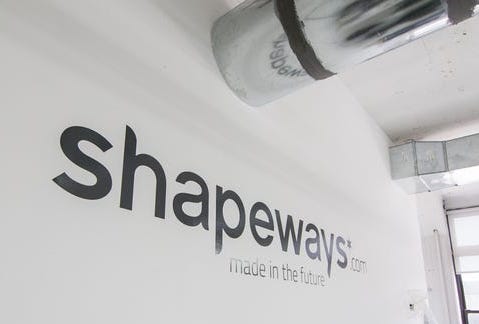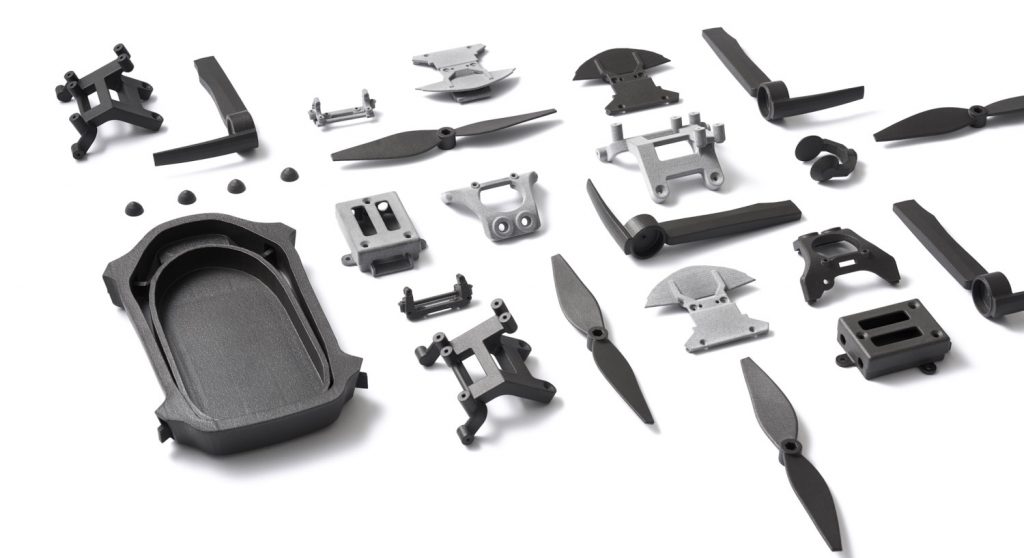3D printing service provider Shapeways (SHPW) has been notified by the New York Stock Exchange (NYSE) that it’s not in compliance with the exchange’s continued listing standards.
NYSE requirements mandate that each listed company’s stock must maintain a minimum average closing price of $1.00 per share over a consecutive 30-day trading period. Shapeways’ stock hasn’t traded at above $1.00 since July 14, 2022, and while the notice has no immediate impact on its listed status, if it’s unable to regain compliance within six months, it may find itself delisted.
In response to the notice, Shapeways has said it intends to notify the NYSE of its strategy to return to compliance by August 29, 2022, with options such as a reverse stock split actively being considered. If the company were to opt for such a move, its outstanding share count would be reduced in a way that proportionally raises its share price, while leaving its overall market value unchanged.

Shapeways’ ongoing financial woes
As stated in Shapeways’ public response to the NYSE notice, it has a six-month cure period to make its shares compliant again, and measures such as reverse stock split could help it do so. However, the company’s continually low share price is also indicative of its inability to reach the lofty financial goals it has set out to investors over the last 16 months.
In the run-up to Shapeways’ merger with SPAC Galileo Acquisition, which saw it go public in September 2021, it made some bold projections about the revenue potential of its service bureau business. In fact, during an investor presentation when the deal was announced in April that year, the firm forecasted that its revenue would hit $86 million in FY 2022, $150 million in FY 2023 and $250 million in FY 2024.
However, even with its merger expected to generate $195 million in funding, it wasn’t initially clear how this would help Shapeways achieve this rate of growth. Shapeways had raised over $100 million prior to the deal, but as of December 31, 2020, it had just $948,000 in property and equipment, raising questions over where prior funding had been invested.
As it turned out, the company’s merger ultimately saw it bring in $103 million in gross proceeds, as it attracted significantly less investor interest than expected. Despite this, when the move was completed, Shapeways CEO Greg Kress said it would provide the firm with a platform on which it could “execute on its growth strategy and drive shareholder value,” but it has since failed to reach its lofty goals.

In its first financials after going public, Shapeways slashed its FY 2021 guidance from the $44 million it had initially projected, to between $32.5 million and $33.5 million. Since then, Shapeways’ plans to drive growth via investments haven’t proven fruitful either, as its most recent financials in Q2 2022 show that it generated revenue of $8.4 million, 4.5% less than the $8.8 million it reported in Q2 2021.
Likewise, the company’s H1 2022 revenue of $16 million leaves it well short of the $86 million it first forecasted to investors for FY 2022, potentially indicating why its share price has dipped to such a low level. On its Q2 earnings call, Kress emphasized that Shapeways’ expanding manufacturing capabilities are “broadening its addressable market,” and allowing it to target “enterprise-level” clientele.
That said, the “tangible progress” cited by the CEO on the call hasn’t been reflected in the company’s short-term projections, and it forecast flat quarterly growth for Q3 2022, with its guidance of $8.3 million to $8.6 million. Having spent on facilities and acquired MSG and MakerOS, Shapeways also shelled out $9 million on expanding in Q2. As a result, the firm finished the quarter with $50.4 million in cash, just over half the funding raised via its SPAC merger and no revenue growth to show for it.

SPAC mergers: a poisoned chalice?
Compared to traditional IPOs, which have legally-liable underwriters, required to carry out a huge amount of due diligence before moves go ahead, SPAC mergers have no such requirement. As a result, firms going public via IPOs avoid ‘forward-looking statements,’ while those undergoing mergers have a freer hand to make lofty projections, and leave it to investors to gamble on their success.
While risky for investors, SPAC mergers have been used continually by 3D printing firms as a means of becoming publicly listed and raising capital over the last two years. In late-2020, Desktop Metal went public on the NYSE in a move that saw it raise $580 million, funding it has since deployed to make a string of acquisitions.
More recently, Nuburu has unveiled plans for a SPAC merger with Tailwind Acquisition, in a deal that’s expected to raise $334 million in gross proceeds, and attract another $100 million investment from Lincoln Park Capital. Using the funding, the firm says it plans to invest in the R&D of its blue laser technology, and unleash a cross-industry expansion.
To stay up to date with the latest 3D printing news, don’t forget to subscribe to the 3D Printing Industry newsletter or follow us on Twitter or liking our page on Facebook.
While you’re here, why not subscribe to our Youtube channel? featuring discussion, debriefs, video shorts and webinar replays.
Are you looking for a job in the additive manufacturing industry? Visit 3D Printing Jobs for a selection of roles in the industry.
Featured image shows a Shapeways sign from inside its New York warehouse.


